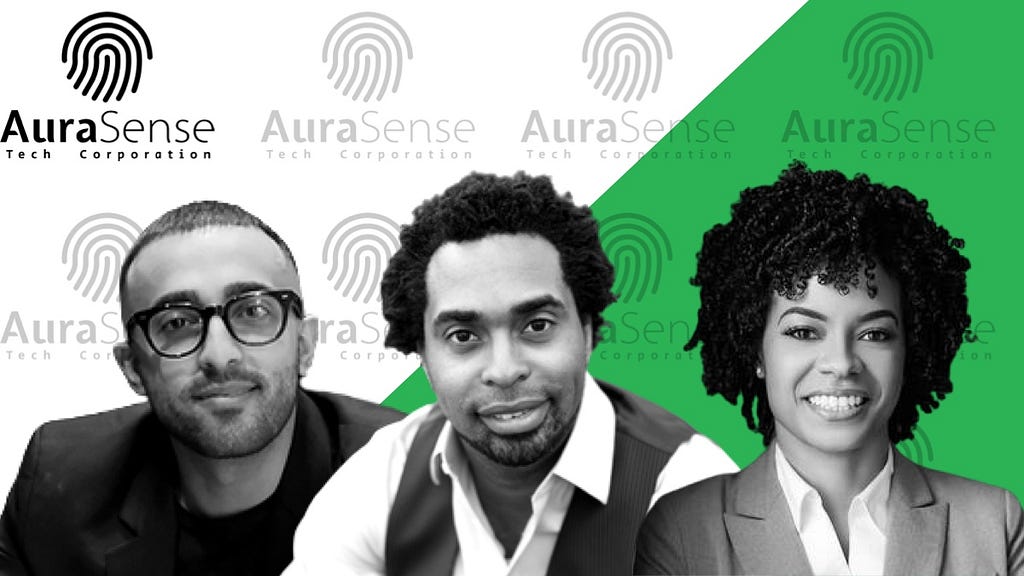Wellness
AuraSense Embraces Metaverse Technology to Transform Hand and Wrist Physiotherapy
Personal experience and a dearth of qualified clinicians lead this innovative “digiceuticals” company to develop better, more accessible care management for patients and providers through haptics and immersive VR/AR.Investors, contact us to learn how y…

Personal experience and a dearth of qualified clinicians lead this innovative “digiceuticals” company to develop better, more accessible care management for patients and providers through haptics and immersive VR/AR.

Challenge
Physical and occupational therapists provide treatment over a period of time to heal, strengthen, and support better muscle and movement control. Doctors note their patient’s PT/OT progress through handwritten notes during periodic visits, a process that is inefficient and incomplete. There’s often no correlation shown between what’s on the page and patient improvement. Additionally, many patients don’t see these assessments and can’t tell whether they’re progressing/healing or even doing the exercises correctly.
Hurdles to more effective physiotherapy are many. Demand for PT outweighs the number of clinicians available to perform the task (most physical therapists are employed by the VA). You might have to travel a long distance to see a PT. And physical therapists are underpaid, making it difficult to retain current clinicians or attract new ones. Both providers and patients are losing out in these scenarios, and the PT/OT system is suffering.
PT/OT needs to be more accessible and engaging for patients to ensure they feel invested and successful in their care journey. And we need to make changes to stop the mass exodus of trained professionals due to low pay.
AuraSense was born out of a desire to address this problem, but the technology platform behind it came from an unlikely source: an air gun.
Origin Story
David Charlot, PhD, and Amber Ivey first met as kids. Both military brats, their parents were stationed in Stuttgart, Germany, where they became lifelong friends. Amber, whose background is in performance management and data, lives with multiple sclerosis, enduring hand assessments with her doctor at every checkup. At her appointments she noticed that the doctor collected precious little data other than the observations she manually wrote down. Plus, she never shared these observations with Amber, so Amber never knew whether she was doing exercises correctly, if she was getting weaker or stronger, or how the information gathered helped her condition.
A scientist with a degree in physics and engineering, David’s been involved with healthcare startups in cancer diagnostics and infectious disease testing. He’s also the parent of a child with special needs who attends regular physical and occupational therapy appointments. When the pandemic hit and PT clinics shut down, in-home and Zoom sessions became the norm.
During one of these in-home sessions, David asked questions about the OT’s process. He explained that he created digital healthcare solutions, and knowing his daughter’s needs he wondered if there might be a better way to approach her care. Perhaps it could be made easier for clinicians to use the information from these sessions to correlate certain activities to patient improvement. The therapist admitted they needed better tools for assessing progress and including their patients in their own care.
His first thought was to use video game or immersive VR technology. After all, your entire body interacts with these activities. Why not use it for physical therapy and capture how the body is moving digitally rather than manually? Clinicians could then gather/process data more efficiently, leading to more in-depth analysis for optimum results. So reached out to his old friend Amber Ivey, someone who’d spent a lifetime in physical therapy and knew all about data correlation.
The two joined NSIN (National Security Innovation Network) Foundry, a Department of Defense virtual incubator, and they met Zav Zaboliyan, whose background was media, marketing, and advising companies on how to raise funds. Zav was living his own unsatisfying PT story due to a car accident, and in speaking with David and Amber, he realized his experience was the norm and wanted to fix it for others.
At the incubator, someone presented a sound gun created to keep people from talking. Consisting of a microphone with an ultrasonic transducer ray pointed in the speaker’s direction, within half-a-second of speaking, your voice is projected back to you, causing you to stop talking. Intrigued, David asked if the sound gun could create an energy impulse that makes someone feel like they’re getting punched in the face — a physical manifestation of the psycho-perception issue. The presenters figured it could and David immediately thought, “We can use this for physical therapy.”
The first iteration of their product used the Lululemon Studio Mirror as the delivery system for a full body virtual physical therapy experience. After getting early investor feedback, they honed and reworked their solution, moving to VR/AR technology and haptics to create a physical, interactive experience via a digital interface. They presented this new iteration at the Cade Prize event in Gainesville, FL and the solution excited attendees who could literally “feel” something and see their hand moving on the screen.
Now that the idea was in the wild, they conducted more market research and talked to more industry professionals, to discover the appropriate application for the technology. What they discovered was an opportunity to rethink hand assessments. It turned out that the reason hand assessments either weren’t being done or maintained wasn’t because clinicians can’t do them. They were an opportunity cost problem. By automating hand assessments, a lower-level tech or even a robot could manage data gathering while the physician provided care.
This clarity of focus opened their minds to other ways their solution could thrive financially while providing the relief and support both patient and clinician need in the physical therapy space.
Under the Hood
Focusing on MS and focal dystonia for their use case, AuraSense Tech’s first solution is neither diagnostic nor therapeutic: replacing manual note taking with an automated performance assessment tool that captures the appropriate data for a patient’s treatment.
A digital haptics pad accesses x-rays, ultrasounds, and doctor’s notes via machine learning then customizes the pad to the patient’s hand by creating acoustic sound objects. Utilizing data points on the affected hand to understand the baseline condition at the start of treatment, recommended activities are automatically adjusted to accommodate the care journey, closing the information loop to progress the patient’s rehabilitation. The doctor sees the patient remotely, using AR to virtually access thermographic imaging to look inside the person’s limbs to study blood flow, modality, and where pain points are to provide better outcomes.
The second product planned is a triage-based digital diagnostic instrument. This wearable sensor captures surface electromyography, leading to more meaningful and immersive data that correlates with other biometric signals. This information will be used for clinicians to then prescribe what the company is calling “digi-mechanical treatment” — the third product planned as actual therapy for hand injuries.
The team is also sensitive to the physical and occupational therapists who either struggle financially or still have passion for their profession but can’t afford to indulge it. Creating a gig-economy model for their solution means therapists could run a clinic out of their own homes based on the vision AuraSense Tech has shared. By creating virtual treatment, these clinicians can see many clients and more frequently. The team has a desire to bring those unemployed professionals back to the jobs they love and allow them to provide the kind of care patients deserve from experts who understand best how to help them heal. They are finding ways to expand opportunity in the physical therapy space by offering economic benefit for providers and better access for patients.
AuraSense Tech is currently working closely with the military to further their solution. The VA is the number one supplier of physical therapists in the US, and the people helped, and the insight gained from this partnership will prove invaluable.
Why We’re Proud to Invest
AuraSense Tech has taken the time to understand the pain points of clinicians and patients and believes the digital platform they have landed on will be useful in providing care for other disease models. Getting their technology into as many hands as possible — creating an OEM approach for this whole ecosystem to allow other healthcare providers and groups to go through the same process on their platform — is their goal. It can mean providing better wellness to all and if they can be the conduit for that, it will be worth all the hard work.
Their inclusivity captivates StartUp Health as does their fast-track thinking. AuraSense Tech is providing innovative solutions through proven cutting-edge technology that is primed for quick deployment. Their main tech comes from ultrasonic phased-array technology pioneered in satellites and radar communications, and their haptic pad is open-sourced and currently being used for automotive touchscreen kiosks in cars. That choice to borrow from another industry to create a solution that can be kicked off to do the most good in the most efficient and expedient way makes it clear to StartUp Health that AuraSense Tech is passionate about bringing quality healthcare to this sector and understands how to utilize the tech available to them in the best way possible.
Per the AuraSense team, the largest rise in hand-related injuries is in children between ages six and 15 due to video controllers and cellphones. Technology usage is changing the landscape and requirements for care, with kids experiencing osteoarthritis and carpal tunnel. These issues combined with the ways this demographic likes to be engaged, demands a new type of care delivery to ensure the most effective treatment making the most impact.
StartUp Health recognizes the personal attachment and connection that led to AuraSense Tech creating their solution and that hits at the heart of health innovation. This is a true team and their commitment to the path of their technological journey and each other is obvious.
Join us in welcoming AuraSense to the StartUp Health family!
→ Learn more and connect with the AuraSense team.
Passionate about breaking down health barriers? If you’re an entrepreneur or investor, contact us to learn how you can join our Health Equity Moonshot.
Investors: Contact us to learn how you can back Health Transformers and Health Moonshots.
Digital health entrepreneur? Don’t make the journey alone. Learn more about the StartUp Health Community and how StartUp Health invests.
Follow us on social media for daily updates on Health Transformers: Twitter, LinkedIn, Facebook, and Instagram.
AuraSense Embraces Metaverse Technology to Transform Hand and Wrist Physiotherapy was originally published in StartUp Health on Medium, where people are continuing the conversation by highlighting and responding to this story.
diagnostics
wellness
healthcare
digital health
machine learning
application
therapy

Lion’s Mane Mushroom: History, Benefits, and Adaptogen Properties
Explore the intriguing world of Lion’s Mane Mushroom in our comprehensive guide. Dive into its unique properties, historical significance, and myriad health…
AI can already diagnose depression better than a doctor and tell you which treatment is best
Artificial intelligence (AI) shows great promise in revolutionizing the diagnosis and treatment of depression, offering more accurate diagnoses and predicting…
Reasons You should Get this: Neptune Wellness Solutions Inc (NASDAQ:NEPT), WeTrade Group Inc. (NASDAQ:WETG)
NEPT has seen its SMA50 which is now -9.28%. In looking the SMA 200 we see that the stock has seen a -92.25%. WETG has seen its SMA50 which is …
The…













